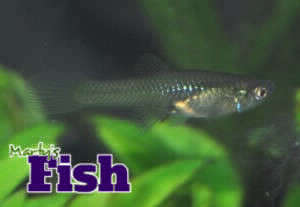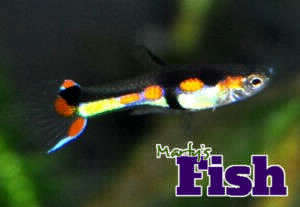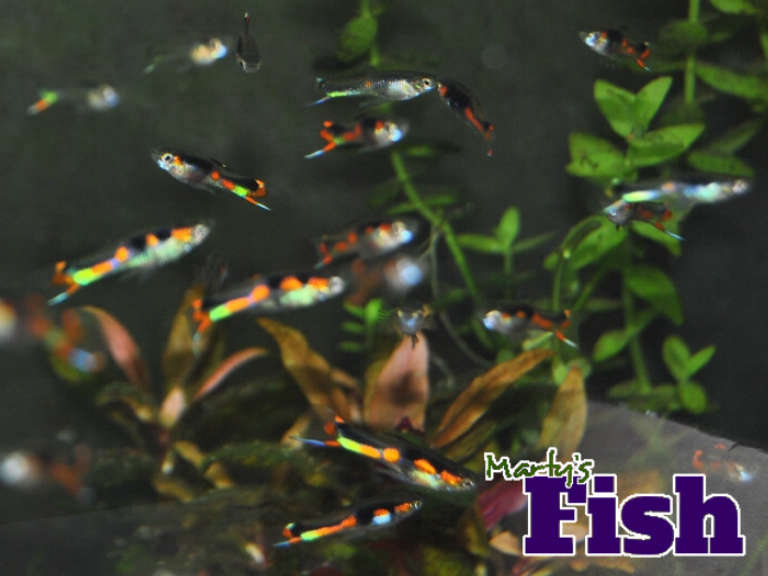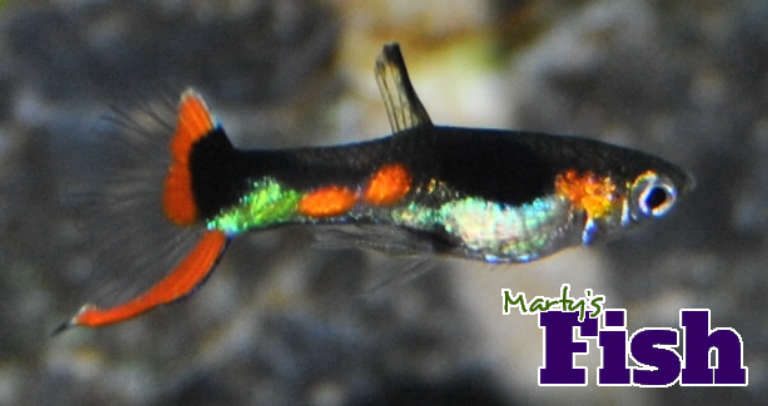Endlers Livebearers; a New Species Available to the Tropical Fish Hobbyist

Female Orchid Endler 
Male Orchid Endler
Endlers Livebearers are a relatively new species available to the tropical fish hobbyist.
Although it was first discovered by Franklyn F Bind in 1937 in Laguna de Patos in Venezuela, it was not introduced into the aquarium trade until after it was rediscovered by Dr. John Endler in 1975.
Dr. Endler gave some of his fish to Dr. Donn Eric Rosen, Curator of Ichthyology at the American Museum of Natural History and to Dr. Klaus Kallman, of the New York Aquarium.
Dr. Kallman later introduced the new fish to the German aquarium community. Unbeknownst to Dr. Endler, Dr. Kallman gave the little fish the name “Endler’s Livebearer”. It wasn’t until several years later that Dr. Endler found out about the “Endler’s Livebearer” name when a colleague asked him about them.
The progeny of the original stock that was brought back by Dr. Endler in 1975 eventually lost much of its wonderful coloration due to inbreeding and hybridization.

Is the Endlers Livebearer Really a Guppy?
Often called Endlers guppies, Endlers Livebearers closely resemble guppies (Poecilia reticulata), in fact for several years there was quite a bit of controversy over the species. Many believed that the Ender’s Livebearer had been in fact just another variety of a guppy.
Studies concerning whether Endlers were guppies or a distinct and separate species continued many years.
In 2009 Manfred. K. Meyer and Manfred. Schartl published their findings based on molecular data showing that although this species closely resemble guppies they are a distinct species of their own and they have been classified as Poecilia wingei.
They are not Poecilia reticulata or Poecilia Obscura.

Are Endlers Endangered Or Extinct In The Wild?
Recent explorations attempting to collect Endler’s Livebearers from Venezuela have shown an alarming situation.
Pollution and predatory fish species have significantly reduced the Endler population in the wild. Attempts to find many of the color strains that were once prolific have been unsuccessful.
It is believed that many of the wild color variations are now endangered or possibly even extinct.

Classifications of Endler Live-bearers
Because the Endlers Livebearer so readily breeds with guppies and mollies it was important to create a system to help ensure the preservation of the pure form of the species. A system was developed by Guy Smith and was accepted by the Endler community of the time.
N Class Endlers Livebearers
Any Endlers Livebearer (and progeny) that can be shown to have originated from their native waters in Venezuela.
In order for an Endlers Livebearer to be classified as N Class careful records must be kept to show the direct link to the wild Endlers Collected in Venezuela.

K Class Endlers Livebearers
The progeny of any Endlers Live-bearer crossed with any other live-bearer or any hybrid strain.
There have been many beautiful hybrid strains developed by tropical fish hobbyists. Some of the most popular hybrids are Tiger Endlers, Yellow Jacket Endlers and Paradise Endlers.
Occasionally images of Endlers being offered on the internet show that some Endlers advertised as N Class are actually hybrids and should be classified as K Class.
P Class Endlers Livebearers
Any fish of unknown origin but appearing to be an Endlers Livebearer based on the characteristics of size, shape and color.
Because it is so difficult to document the origination of the Endlers to those that came directly from Venezuela, much of the “pure” stock kept by hobbyists today are considered or should be considered P Class.
Often fish offered for sale as N Class Endlers are really P Class Endlers due to the lack of documentation of the Endlers origin.

Very neat! I just got my orchid Endlers from Adrian not more than two weeks ago. I like them lots! I wanted some fire red flame tails from him, too, but he didn’t have any on hand.
First of all , I don’t recognize the class system. In my opinion all Endlers are pure whether it comes from its original place or tank bred. Endlers cross are very recognizable from mostly patterns and also the young cant produce.
I agree with you that many of the Endlers hybrids are quite easy to spot however I still see the need for the class system. First of all Endler / Guppy hybrids can reproduce. This is the reason the class system is needed.
The class system has nothing to do with where they were captured or bred. If the last specimens of a particular strain captured from the wild were captured in 2007, and the Endlers lifespan is fairly short, then it would make sense to assume that all Endlers of that particular strain kept by breeders and hobbyists are “tank bred”.
The class system was set up to ensure that there was a way to make sure that there were always pure strains of Endlers available for hobbyists, breeders and researchers. Class N Endlers are unique in that they can be traced back to their original stock that came from the wild.
Many Endlers are “pure” but they do not have supporting documentation proving that they came from the original wild stock. These Endlers are P Class Endlers.
Hybrid Endlers are are classified as K Class Endlers. Even if it is 99% pure Endler it is still a hybrid and must be classified as a K Class Endler.
Marty (October 17, 2018
Recently more Endlers have been captured from their native waterways and have been introduced into the hobby.
I own and breed many pure Endlers myself
I just got 12 wonderful little pairs of pure Class N Endlers from AdrianHD and they are just beautiful. I have owed guppies in the past and these guys, definitely not guppies. I love how the males show off to each other, especially the females.
I agree. Endlers just seem much more active and for me they are more enjoyable to watch. Maybe it’s because they have not yet been truly domesticated. They are a real delight to own.
I recently started an aquarium a few months ago and recently discovered this wonderful little fish and have been trying to learn all I can about them and this was very helpful. thanks.
I am trying to locate some pure strain N class Endlers to maintain a population. I am familiar with population genetics management and the development of outcross lines to prevent inbreeding depression and woud like very much to maintain a living population to preserve the species. I will be looking for documentation available before purchasing . I would greatly appreciate any information to further my endeavor.
That’s seems to be somewhat difficult at this point as the domain names (owned by AdrianHD) for the websites that contained the registered breeders/keepers on the ELAA have been lost and are now owned by someone else.
We were fortunate as we kept screenshots of our registration on the ELAA and still keep that original stock.
Unfortunately we are not offering any of our fish at this time.